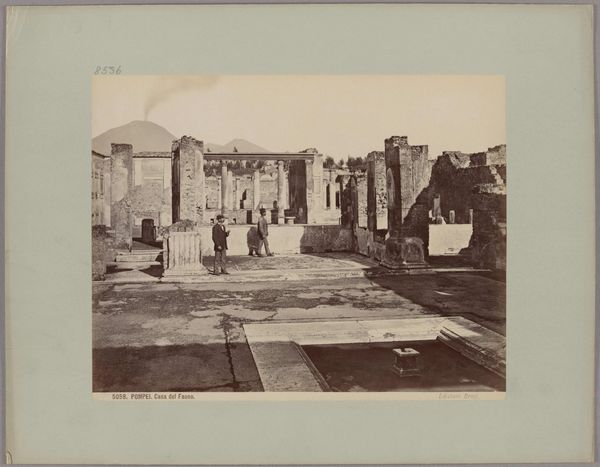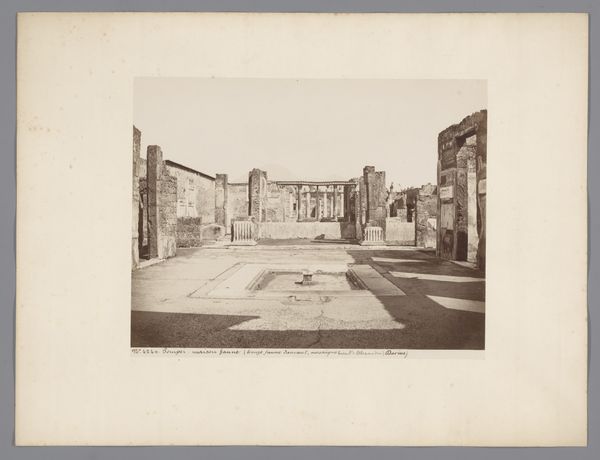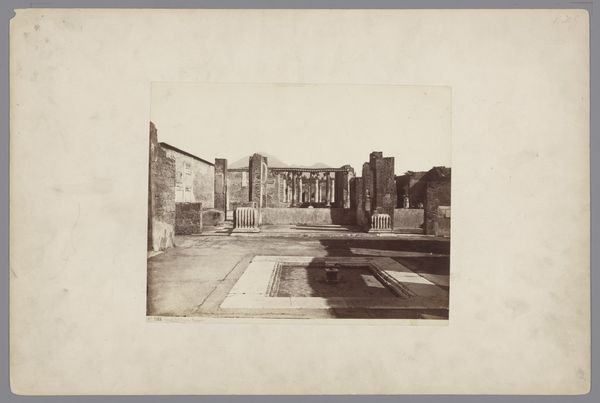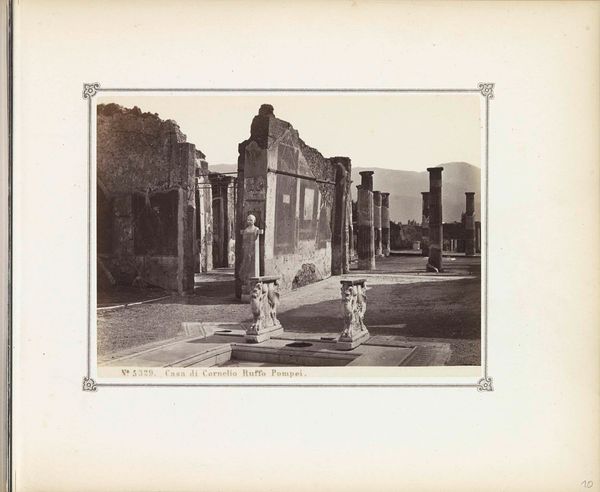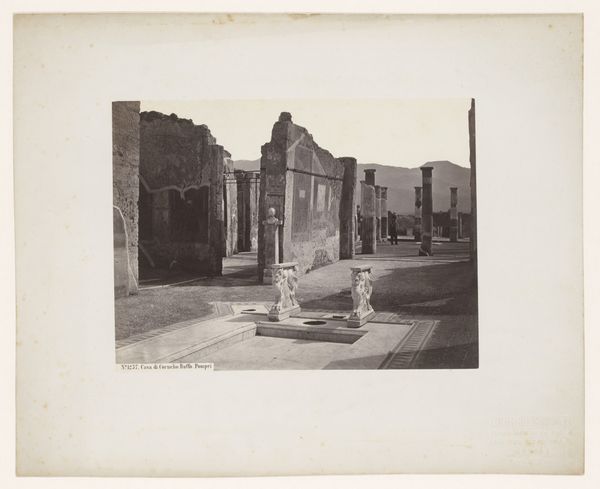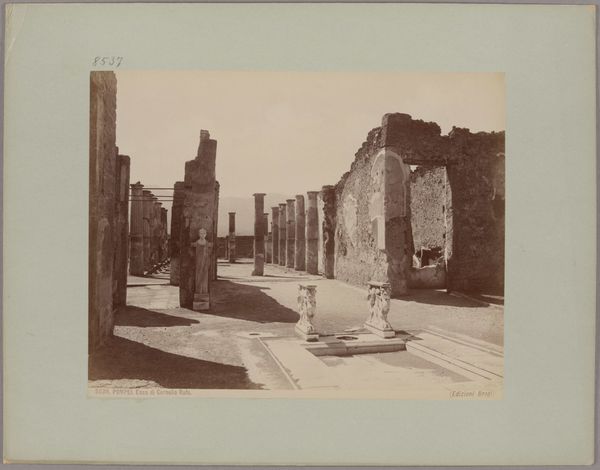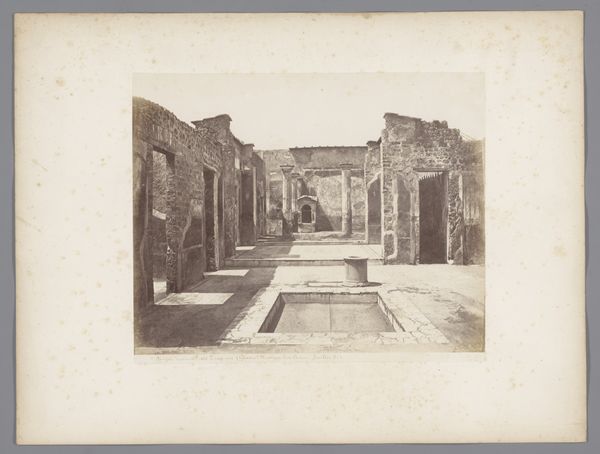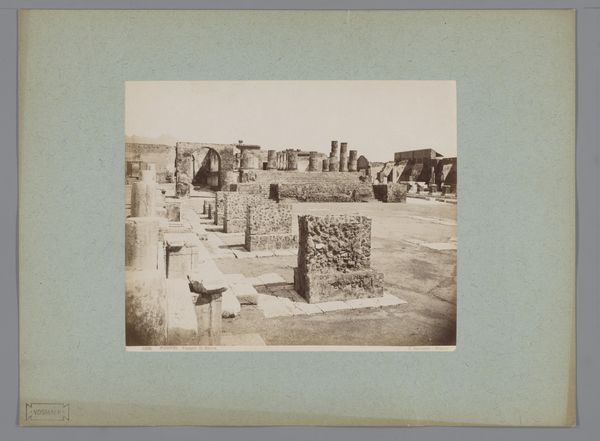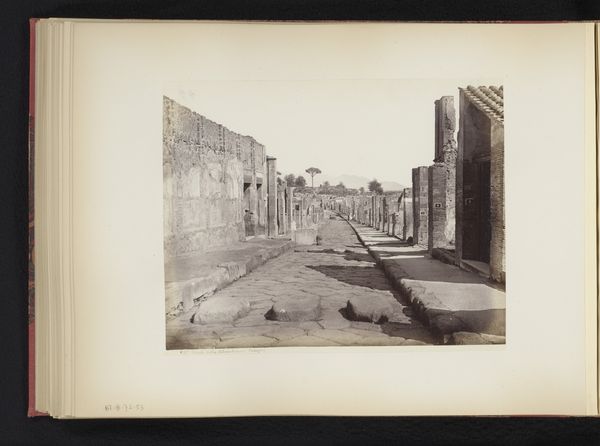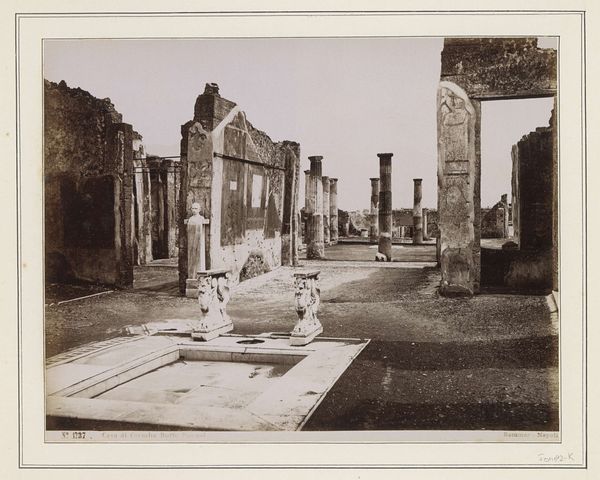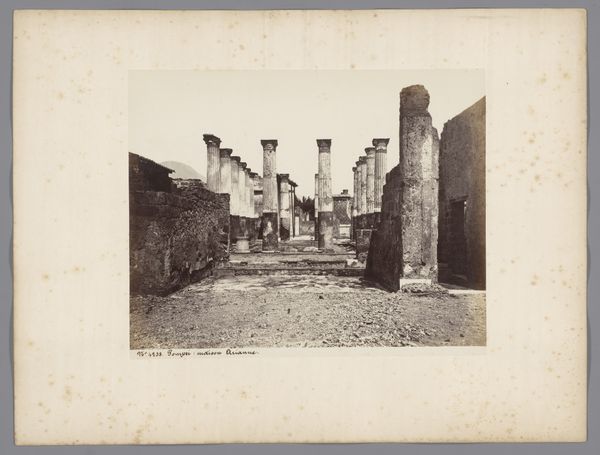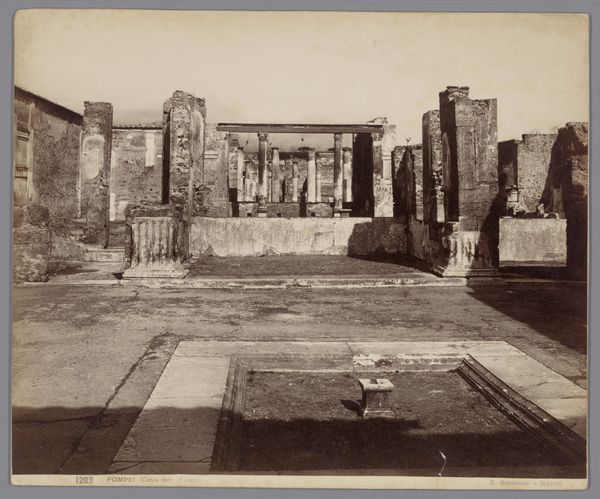
photography, gelatin-silver-print
#
landscape
#
photography
#
ancient-mediterranean
#
gelatin-silver-print
#
cityscape
#
realism
Dimensions: height 107 mm, width 155 mm, height 165 mm, width 198 mm
Copyright: Rijks Museum: Open Domain
Curator: Here we see Giorgio Sommer’s “Restanten van het huis van Cornelio Rufo te Pompeï,” a gelatin-silver print made sometime between 1857 and 1914. What strikes you about this depiction? Editor: The scene feels both deeply still and immensely resonant. The monochrome adds to this sense of timelessness, but also of profound loss, doesn’t it? It’s as though we're gazing into a memory. Curator: Absolutely. Sommer’s work here engages with broader 19th-century discourses around ruins, history, and memory, particularly concerning power structures and cultural identity. It presents a romantic vision of Pompeii, but it also reflects the complexities of archaeological discovery during a period of intense European nationalism. What can the site’s devastation and preservation mean? Editor: The composition draws attention to the physical remnants – the standing columns, fragmented walls, those almost theatrical fountains. Sommer uses light and shadow to highlight the texture of the stonework. How labor was involved in not just building the structures in the first place, but also excavating and attempting to preserve them, it begs consideration. Who had a hand in what, both then and now? Curator: Precisely. And within that frame, the choice to present the space devoid of human figures reinforces this feeling of ruin. Yet, the composition is deliberately artistic. By doing that, is it about confronting the absence of past life or re-envisioning the story in an ideological context? I would also add that his framing, using photography during its rise as an increasingly popular tool, brings the discussion around the social aspect of image reproduction as a political process. Editor: Yes, this photo and the act of capturing the landscape. I appreciate how Sommer's work brings so much of these complex layers together. You really get a feel for that push and pull when examining the material object – in this case, the ruins of a city and its social legacy but then brought into another existence by silver, gelatin, and the chemical-based techniques used for producing the photo. Curator: Considering Giorgio Sommer's documentation here certainly allows us to further examine social constructs, politics, labor and ideology as material representations of broader systems. Editor: For me, thinking about materiality—the ancient Roman stone versus the modern photographic print—helps me see how different histories intertwine and affect each other across time.
Comments
No comments
Be the first to comment and join the conversation on the ultimate creative platform.
